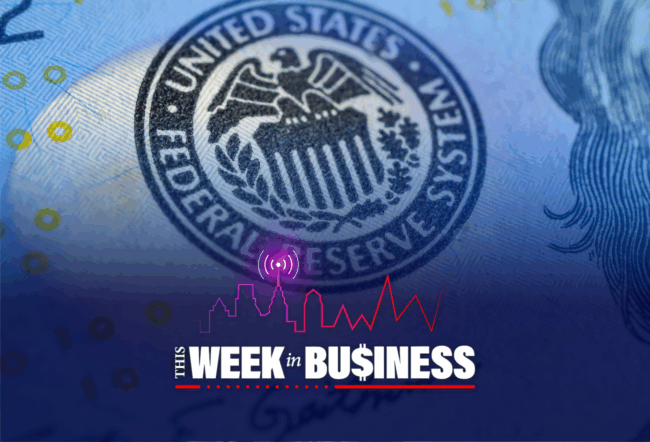The recent downgrade of the U.S. credit rating from AAA to AA+ by Fitch Ratings is worrisome because of its timing, Wharton professor of finance and economics Itay Goldstein said on the Wharton Business Daily radio show that airs on SiriusXM. (Listen to the full podcast above.) He pointed out that the Biden administration is fighting multiple battles at once: a ballooning deficit, high inflation, and a fragile agreement in Congress over raising the debt ceiling.
Goldstein pointed out that in August 2011, when Standard & Poor’s downgraded the U.S. credit rating to AA+, the markets seemed to shrug it off. “The fact that at the end of the day it didn’t completely shake the debt markets and things moved along, and we got used to it, suggests that it’s not as big a deal now as well,” Goldstein said. But the situation now is different in terms of the government’s ability to respond effectively to the downgrade, he noted. “Some things that it could do back then are more difficult to do right now. When you put it in that perspective, maybe there is a little more to worry about.”
A Downward Spiral
The implication of the downgrade now is that “it might increase the interest rate” that the government must pay on its debt, which in turn will further increase the debt burden, Goldstein said. “It’s a bit of a spiral; this is exactly the risk.” Fitch cited “the repeated debt-limit political standoffs and last-minute resolutions” among its concerns. Each time, everyone expects the government “to figure out a solution,” but “certainly there could be a point in time when they don’t come to a solution,” he said. That could trigger a default on U.S. government bonds, which he likened to “a bit of an earthquake in the financial system.”
Goldstein also saw logic in a Fitch analyst’s recent warning that it may be forced to downgrade dozens of U.S. banks. “When you downgrade the government, then you have to think about downgrading also some of the financial institutions in that country,” he said. Fitch recently raised its concerns over the “slump in performance” among U.S. banks and prospects of them facing continuing challenges in the second half of this year.
A Painful Solution
According to Goldstein, “the ideal path is to take the debt under control … where you don’t continue to accumulate more and more debt.” But that solution will be painful, he noted. “Either you increase taxes, or you reduce expenses. At the end of the day, this is where the debt is coming from.” He didn’t expect the U.S. to regain its triple-A rating anytime soon. “We’re probably going to stay in this current rating for a while before one of these other things happens.”
Transcript
Wharton Business Daily: On August 1, 2023, the ratings agency Fitch downgraded the U.S. credit rating from AAA to AA+, in part because of the debt ceiling battle, but also because of what it sees as somewhat of dysfunction in our political system. Fitch has also said that it may have to downgrade dozens of U.S. banks because of the stresses within the banking sector over the last few months. Some have said that the downgrade of the U.S. credit rating isn’t a big deal, and that it doesn’t matter. Is that actually the case? Itay Goldstein, Wharton professor of finance and economics shares his insights on the matter.
Wharton Business Daily: How much does the downgrade by Fitch on the credit rating of the U.S. matter?
Itay Goldstein: There are different ways to look at it. One way to think about it is, it does matter, because we are used to thinking about U.S. government bonds as risk-free. In fact, when we talk about what is a risk-free rate in our MBA classes, for example, we tend to use the Treasury as the risk-free rate. So, when a major rating agency comes in and says, “This is not as risk-free as you’d like to think, and I’m downgrading it,” then we can’t completely dismiss it. There is something there.
Those who would like to think that this is not a big deal would tell you, “Well, this is not the first time it has happened.” Standard & Poor’s, in fact, downgraded the U.S. bond rates a decade ago. So, you know, it’s always been that way. It’s not that new. As a result, it’s not a big deal. It’s in-between. When [another] rating agency comes in and says it has downgraded [the U.S. credit rating], we should pay attention to it. But I will remind you that it happened over a decade ago by [S&P], a bigger agency. And we are still here. So, in that sense, it’s probably not as big a deal.
Wharton Business Daily: How different is what we are seeing play out now, from what we saw back in 2011 with Standard and Poor’s?
Goldstein: We tend to think about S&P and Moody’s, and then Fitch [as] the third. So, it was a bigger deal at that point. At that point, a lot of people were thinking what the implications will be, and so on. The fact that at the end of the day it didn’t completely shake debt markets, and things moved along, and we got used to it, suggests that it’s not as big a deal now, as well.
But what is a little more worrying is the fact that the economic situation right now is a little different. Of course, the U.S. government has a big deficit. It is trying to fight inflation. As a result, some things that it used to do back then are more difficult to do right now. When you put it in that perspective, maybe there is a little more to worry about. But I won’t say it is the downgrade by Fitch, per se. When you add it to all the other things that are going on, then maybe there are some reasons to worry.
Wharton Business Daily: Fitch has said it may have to downgrade dozens of banks as well, partly because of what we’ve seen play out in the banking sector over the last few months.
Goldstein: Yes, absolutely. This is certainly something to pay attention to. What we’ve been seeing in the banking sector is a slow-moving saga that has been going on since at least March, with the banking crisis in small regional banks. I think there has been a shift of deposits from these banks to bigger banks, and this [risk of a downgrade] adds to that. Some of these banks are not in as solid condition as they used to be. When you put it all together, then this may justify downgrading some of these banks.
Obviously when you downgrade the government, then you must think about downgrading also some of the financial institutions in that country. I think there is some element of it there as well. Certainly, there are certainly some bumps in the road, when you take the fiscal situation, and when you take the continued fight against inflation. All these are building into some shocks in the financial system, and they certainly contribute to those downgrades as well.
Wharton Business Daily: The solution reached on Capitol Hill to the debt crisis was temporary. It’s a little bit of a band-aid on a wound. The larger question around the debt that the U.S. is carrying right now feels like the can that keeps getting kicked down the road. It doesn’t seem like there’s enough focus to truly address it right now.
Goldstein: That’s absolutely right. The situation with the debt ceiling is certainly troublesome. It reflects an overall political situation in the U.S. where it’s difficult to come to difficult decisions. It’s difficult to reach a compromise between the two sides of the aisle. As a result, every time you need to update the debt ceiling, it just takes a huge toll on the political system, and it’s just very difficult to reach any kind of compromise, or any kind of consensus. So, as you say, we kick the can down the road until the next time it comes up.
At the end of the day, you ask yourself: Why did Fitch choose to do the downgrade at this particular moment? Why didn’t they do it 10 years ago when S&P did it? Why didn’t they do it five years ago, when the situation continued? It’s like a realization that this is not going anywhere. We are going to continue to face these kinds of political fights. And every time, we’re going to come into this uncertainty.
Every time we come into this uncertainty, everyone says, “Yeah, they’re going to figure out the solution.” But what if they don’t? And certainly, there could be a point in time where they don’t come to a solution, and then there is a default on U.S. government bonds, which is a bit of an earthquake in the financial system.
Wharton Business Daily: What then needs to be the path to address this scenario longer-term, to potentially regain the triple-A rating?
Goldstein: The ideal path is to take the debt under control. Ideally, you would like a plan where you don’t continue to accumulate more and more debt, but rather, you try to put it under control. There is no magic solution. The solution is going to be painful, and it has two alternatives. Either you increase taxes, or you reduce expenses. At the end of the day, this is where the debt comes from.
Now, neither of these is popular because people don’t like to see their taxes go up. At the end of the day, if you try to reduce expenditures, it might sound easier, but it does have painful effects in some dimensions. The reason we see that continuing over and over again is that they don’t want to increase taxes, they don’t want to reduce expenses. We just end up in this kicking the can down the road, as you said.
Wharton Business Daily: With interest rates at above 5% and [the possibility that] we may see another one or two interest rate increases by the Fed, I assume it becomes that much harder to be able to pay down some of that debt.
Goldstein: Yes, absolutely. This is exactly the risk here. You asked about the implications of this downgrade. The implication is it might increase the interest rate that you need to pay. [That will] increase the debt even more, and the deficit even more. It’s a bit of a spiral. This is exactly the risk.
When you add this on top of the fact that the Fed is increasing interest rates to fight inflation, it just makes it that much more painful. When you put all this together, this is exactly where we are, and where the danger is.
I don’t think we are talking about something like not being able to borrow anymore. This is a problem that a small country might face, not a country like the U.S. But at the end of the day, it will be certainly more painful, and it certainly doesn’t help the overall fight against inflation.
Wharton Business Daily: Greece went through this about a decade ago, didn’t it?
Goldstein: Yes, absolutely, Greece went through that. The problem here is not going to be as dramatic. It’s not only Greece; it’s also countries like Argentina. Those are smaller economies. They have more severe microeconomic problems. And over there, what you see is that interest rates would really spike, and then it’s really difficult to grow again. Some of them reach a point of default. I don’t think we are talking about that [for the U.S.]. But certainly, there is a bit of a spiral, where the interest rate goes up, the deficit becomes bigger, and the debt becomes bigger. Then the interest rate will have to go up even more. When you put that on top of [measures in] trying to reduce inflation, it just makes it more difficult.
I wish they could get things under control and get the political compromise that is needed to reduce the debt and reduce the deficit going forward. It doesn’t look likely, now. When you look at what’s going on in Washington, D.C. and all the fights, it doesn’t look like this is on the cards immediately.
Wharton Business Daily: From your lips to Capitol Hill’s ears, Itay. It would be nice if they were able to do that. With where the credit rating stands right now, what, potentially, is more likely? The potential of another downgrade, or a path where you could get that triple-A rating back?
Goldstein: I would probably not bet on either one. I don’t think we are going to see another downgrade in the immediate future. I don’t think there is an immediate path to going back to triple-A. I would bet we’re probably going to stay in this current rating for a while, before one of these other things happens.



